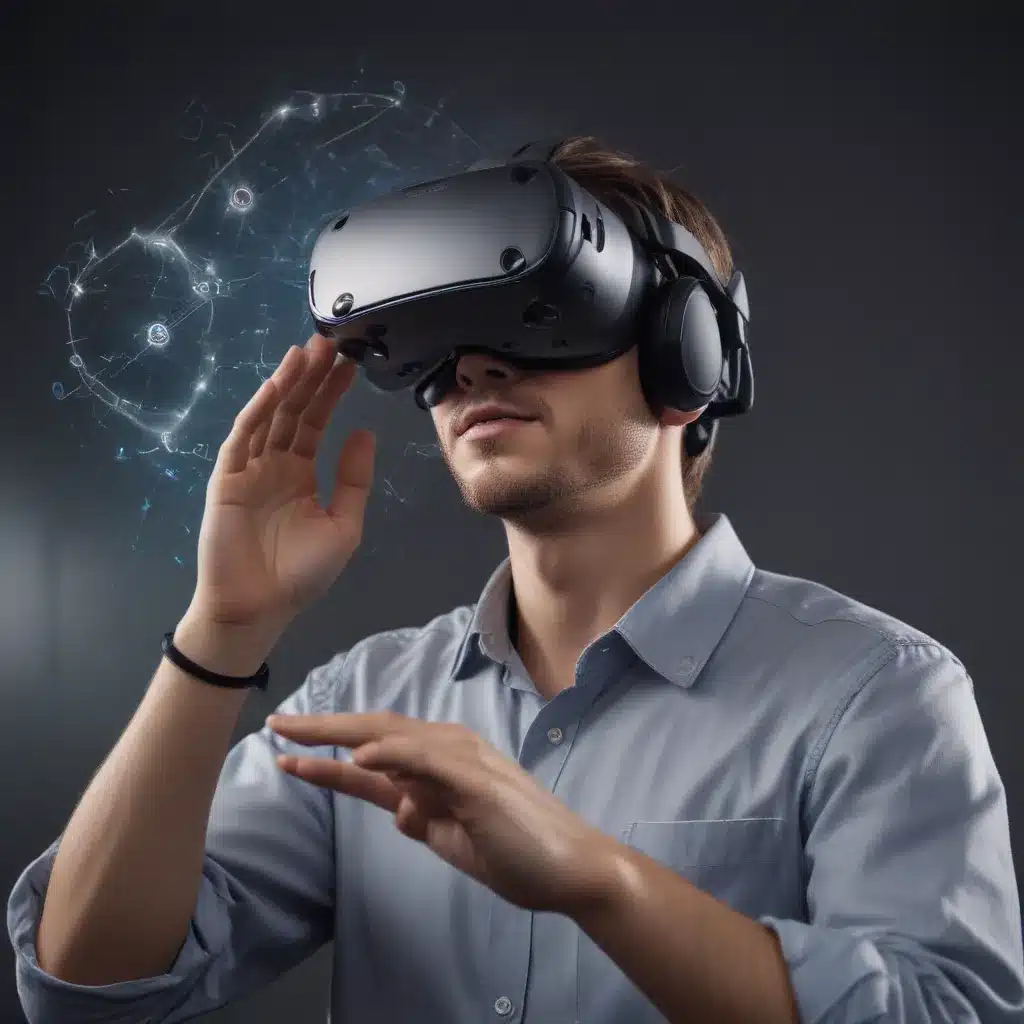The Dawning of a New Digital Era
As I gaze out the window of our quaint computer repair shop in the heart of London, I can’t help but feel a palpable sense of excitement brewing on the horizon. The world of technology is once again poised for a seismic shift, and this time, the future is decidedly more immersive.
You see, my friends, the convergence of two titans of the digital age – Virtual Reality (VR) and the Internet of Things (IoT) – is about to transform the way we interact with the world around us. It’s a future where the lines between the physical and the digital blur, creating experiences that are nothing short of extraordinary. [1]
Unleashing the Power of VR and IoT
Imagine stepping into a virtual workshop, your hands adorned with haptic gloves that allow you to feel the weight and texture of the tools at your fingertips. [2] As you reach out, you can grasp and manipulate physical objects that are seamlessly integrated into the digital realm, blending the tangible and the virtual in a way that defies conventional logic.
This is the power of VR and IoT – the ability to create immersive environments where the physical and digital worlds collide. By leveraging the latest advancements in sensor technology, high-speed connectivity, and intuitive user interfaces, we can create experiences that feel almost indistinguishable from reality. [3]
Transforming the Way We Learn and Work
But the potential of this convergence extends far beyond mere entertainment. Imagine a future where students can conduct experiments and explore scientific concepts in a virtual laboratory, interacting with virtual equipment as if they were in a physical setting. [4] No longer would the lack of resources or the constraints of physical space limit their ability to learn and grow.
Similarly, in the workplace, VR and IoT can revolutionize training and collaboration. Employees can don their VR headsets and step into virtual simulations, honing their skills and practicing complex procedures without the risk of costly mistakes. [5] And when it comes to remote work, these technologies can bridge the gap, allowing distributed teams to come together in shared digital spaces, fostering true collaboration and camaraderie.
The Metaverse and Beyond
Of course, the true potential of VR and IoT lies in their ability to converge with other cutting-edge technologies, creating what many have dubbed the “metaverse” – a seamless fusion of the physical and digital worlds. [6] In this immersive digital landscape, we can shop, socialize, and even work in ways that were once the stuff of science fiction.
Imagine browsing a virtual showroom, trying on clothes and accessories in real-time, and then seamlessly placing an order for delivery to your doorstep. Or attending a concert where the digital audience members are indistinguishable from the physical ones, their virtual avatars swaying alongside you in perfect harmony. [7]
The Challenges Ahead
Of course, as with any transformative technology, the rise of VR and IoT is not without its challenges. Issues of privacy, security, and accessibility will need to be addressed, ensuring that the immersive future we’re building is inclusive and secure for all. [8]
But I, for one, am confident that the ingenuity and passion of the tech community, combined with the boundless creativity of visionary minds, will overcome these obstacles. After all, the potential of VR and IoT to enhance our lives, revolutionize industries, and push the boundaries of human experience is simply too compelling to ignore.
So, as I look out over the bustling streets of London, I can’t help but wonder what wonders the future holds. One thing is certain, though: the next chapter of the digital age is about to be written, and it promises to be a truly immersive adventure.













